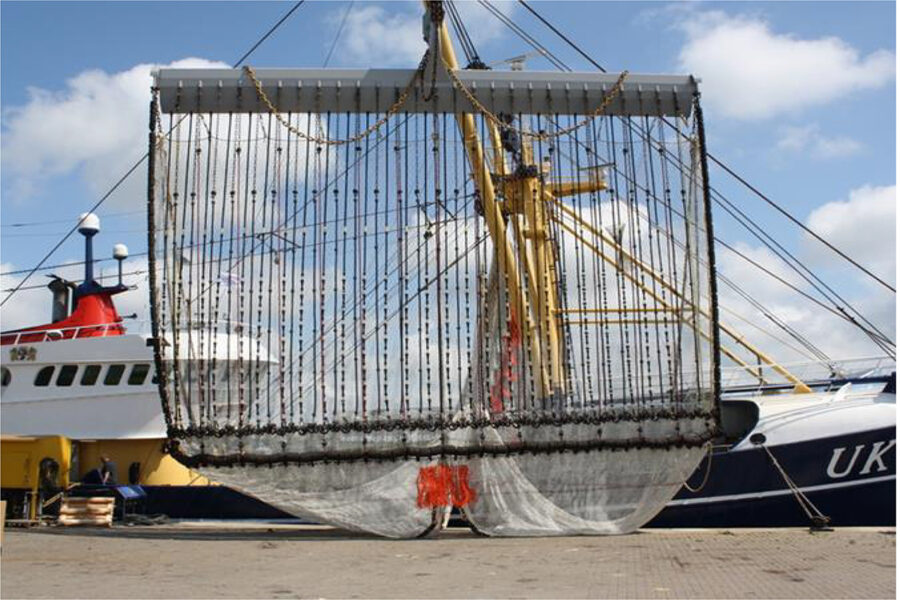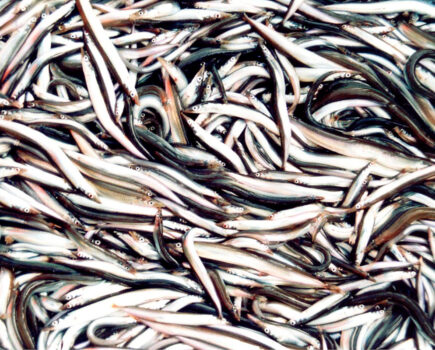EU bans pulse beaming from July 2021 – 42 licences to be withdrawn this year
Electric pulse beam trawling effort will be slashed by 50% this year, and the method will be banned from July 2021, reports Tim Oliver
EU co-legislators agreed on the ban last week as part of an overall agreement on changes to the complex EU technical measures regulation.
The pulse ban will be phased in, with 42 of the current 84 pulse fishing licences to be withdrawn this year, and the remaining 42 by July 2021. Six vessels will be allowed to continue research into pulse fishing after 2021, and must follow a protocol validated by the European Commission’s scientific body. The Commission said it will ‘continue to follow ongoing scientific developments closely’.
The agreement also allows member states to immediately prohibit or restrict the use of pulse fishing within their coastal waters. Three UK-registered vessels use pulse-beaming gear – two English and one Scottish – and DEFRA said it was working with the MMO and Marine Scotland to review their licences.
In a separate development, DEFRA introduced legislation in parliament last week, on the same day as the EU agreement, that will ban pulse beaming in UK waters, regardless of EU regulations (see above right).
The technical measures agreement, reached in Strasbourg on Wednesday last week (13 February) between the EU Commission, Council and parliament, is provisional and will have to be formally adopted by both the European parliament and the Council, though this should be a formality.
The ban on electric pulse fishing follows a long campaign by inshore fishermen’s associations in the UK and the EU, and by NGOs, notably the French-based BLOOM group. They argued that pulse fishing was decimating inshore fishing grounds and leaving them barren.
The ban comes 13 months after the European parliament first voted to enforce a ban on pulse fishing on 16 January last year.
One of the worst-affected areas in the UK is the Thames estuary, where fishermen have fought a long campaign against pulse fishing, and welcomed the announcement. Tom Brown, secretary of Thanet Fishermen’s Association, said they were ‘absolutely delighted’ by the news.
“We’re more than pleased,” he told Fishing News. “The best result would have been a total ban this year, but under the circumstances, this is great news.
“There is no doubt that pulse fishing was seriously damaging the seabed and marine life. It’s not just the fish they’re catching, they’re exposing all the marine sub-life. Then other fish come along and eat it, like birds following a plough. The ground is sterile where these vessels have been working.
“The grounds will recover, but it will take time – they will recover from the edges, like mould.”
Tom Brown also welcomed the UK ban on the method in its waters.
The French BLOOM group, which spearheaded the campaign against pulse beaming, welcomed the ban, but said it remained concerned that 42 pulse beamers would still be able to fish for another two years. They said this could still do significant damage to small-boat inshore fisheries.
BLOOM director Sabine Rosset said: “A two-year transition period from today is far too long for small-scale fishers. They have been suffering from unfair competition from industrial vessels fishing illegally for years.” She called on member states to immediately ban pulse fishing in their own coastal waters.
Dutch fury
However, the Dutch industry was outraged by the ban, saying that ‘lies and emotion have beaten science’.
They said it was a backward step that defied scientific evidence that demonstrated the benefits of pulse fishing. They said it could cost the sector €200m, and that the transition period was ‘only a sticking-plaster solution’.
“A ban on pulse fishing makes no sense,” said Dutch organisations VisNed, De Nederlandse Vissersbond and EMK.
“Fishing with pulse gear delivers what civil society demands – lower by-catch, lower fuel consumption, and less seabed disturbance. These aims remain high on the agenda, but we have to stop using pulse gear.
“It has been scientifically proven that we cut fuel by 46%, we fish more selectively, and the lighter gear means less seabed disturbance. And yet an emotional lobby succeeds in pulling the plug on innovation, which is incomprehensible. The European decision-making system has failed.
“We should not be thinking of innovation when our work on innovation, supported by scientific research, has been trashed in response to a campaign based on emotion.”
EU fishermen’s organisation Europêche was also against the pulse ban. MD Daniel Voces said: “Europêche regrets the negative socio-economic implications generated by this political decision which will affect 600 fishermen and their families and lead to an economic loss of €21.5m.”
UK bans pulse beaming independently of EU
EU vessels will no longer be able to carry out electric pulse fishing in UK waters after Brexit, fisheries minister George Eustice announced last week.
A statutory instrument (SI) laid in parliament last week (Wednesday, 13 February) will ensure that EU technical measures can apply in the UK after Brexit. But it removes the current derogation from the overall EU ban on electric pulse beam trawling that has allowed 84, mainly Dutch, vessels to use the method.
Although the EU has agreed to ban pulse trawling, the UK legislation means that the UK will be able to ban pulse trawling in the event of a no-deal Brexit, or after any implementation period included in a deal.
Fisheries minister George Eustice said: “There are serious concerns about pulse fishing, and it is wrong that the EU has allowed it to happen. We will stop EU vessels pulse fishing in UK waters, safeguarding our marine environment and keeping our seas sustainable for future generations.”
In addition to technical conservation measures, the SI will ensure that retained EU law regarding regional fisheries management organisations and the North Sea multi-annual plan is operable in the UK after we leave the EU.
Brussels streamlines tech regulations
The ban on pulse beam trawling was just one part of a much bigger overall agreement on a new technical measures regulation that will decentralise and simplify existing rules.
It will give fishermen ‘a stronger say in deciding on the best measures for sustainable fishing adapted to their specific needs’, said the Commission.
The new rules streamline the technical measures that determine how, where and when fishermen may fish, as well as determining the type of gear, catch composition, and ways to deal with accidental catches.
It also condenses a number of regulations into one single text, which should ease interpretation and facilitate compliance.
The regulation introduces quantitative indicators to determine the effectiveness of technical measures in reducing unwanted catches of juvenile fish, and by-catches of mammals like whales, dolphins and porpoises, and marine seabirds, as well as indicators defining the impact on the marine habitat.
“This is a novel approach intended to lead to better overview of results and higher accountability by the operators. The agreement is also good news for cetaceans and seabirds, with the extension of the obligation for member states to introduce mitigation measures to avoid by-catches of seabirds, whales, dolphins and porpoises in all sea areas, when justified by scientific evidence,” said the Commission.
EU fisheries commissioner Karmenu Vella said: “The new technical conservation measures present an important step forward in delivering on a concrete EU commitment to a sustainable fishing sector and the protection of the marine environment.
“The agreement gives stakeholders and fishermen a tool to determine what the best measures for fishing are, taking into account their local context, while safeguarding the health of our oceans.”
They simplify the existing technical conservation measures that have become highly complex over the years. They include provisions for the protection of the marine ecosystem and marine habitats, and for avoiding by-catches of non-commercial and sensitive species.
The Commission made the proposal for a new technical regulation in 2016. The aim was to create a more flexible management system, giving more power to the regions to customise technical conservation measures in their own sea basins.
Barrie Deas, chief executive of the NFFO said more details and clarity about what was agreed would be available early this week, but it appeared that a lot of controversial issues were pushed through.
He said there appeared to be a more “results-focused approach” in the approach to use of small mesh nets, but member states would be able to adapt the rules as long as the result is lower selectivity.
“The new regulation carries the mark of multiple compromises, many of them driven by politics rather than science or an understanding of the fisheries concerned. This highlights the dysfunction at the heart of EU decision-making on fisheries – a view shared by many fishermen outside the UK,” he said.








